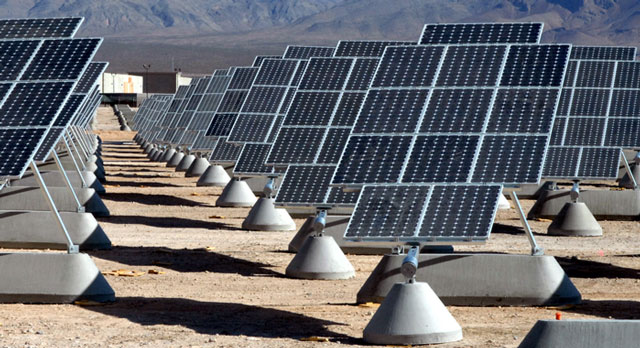
Eskom may be unable to avert an energy crisis, but South African households and businesses can generate power on their rooftops at a cost per kilowatt that rivals that of megaprojects such as Medupi or Kusile, without subsidies or incentives.
The cost of rooftop solar photovoltaic systems to power residential and commercial buildings has dropped over recent years to reach parity with domestic and commercial tariffs.
According to the CSIR, residential-sized photovoltaic systems are already a cost-competitive alternative to other new-build options, coming in at an estimated 81c/kWh versus 80c/kWh at Medupi or Kusile. This solar power cost includes financing at an interest rate of 9%.
Consumers are cottoning on and, as the National Energy Regulator of South Africa (Nersa) notes, there has been a great increase in the installation of private rooftop photovoltaic systems over the past year. Their total peak capacity is only about 10MW at present but if demand is stimulated the CSIR estimates it could quickly reach 500MW/year.
Germany, which has less sun than South Africa, is the world’s largest small-scale user of photovoltaic power. It has a target of 52GW of installed capacity by 2017 and, on a sunny day in June last year, was able to generate more than half the nation’s power needs through solar energy.
The Integrated Resource Plan estimates South Africa’s energy needs will double to almost 90GW of installed capacity by 2030, and rooftop and commercial photovoltaic power could grow to account for as much as 22,5GW of this requirement.
In most cases, solar photovoltaic systems are set up at the consumer’s expense with stable energy supply as the only incentive. But already some municipalities — such as the City of Cape Town — allow small-scale photovoltaic users to sell back excess power into the national energy grid.
Frank Spencer, who heads up the Southern African Photovoltaic Industry Association’s rooftop/embedded generation committee, says: “Cape Town progressively allows customers to produce their own solar and will buy the extra energy they produce [at the low tariff of 50c/kWh].”
The association’s chairman, Davin Chown, said Eskom and Nersa restrictions on the size of photovoltaic installations, to limit the amount of energy put into the grid, were onerous beyond reason. “So, too, are the Eskom connection timelines … [they] are just far too costly and take too long.”
Rooftop solar power does present challenges to the present structure. Municipalities derive a chunk of revenue from electricity sales that they use to cross-subsidise other services.
There is also the issue of whether selling excess power into the grid, while boosting supply during daylight hours, could exacerbate supply problems during night-time peak times.
Regulator Nersa has suggested that owners of solar photovoltaic rooftop systems should pay more to get electricity from the grid because they could boost demand during peak times once the sun has set.
“I have a firm belief that solar photovoltaic power could play that role in alleviating strain on the system,” says Chown. “There shouldn’t be a disincentive; there should be a massive incentive to put electricity back into the grid.”

He adds that the uptake of solar energy would create a new industry and a new skills base. “[It] can be rolled out at scale and will grow the SMME [small, medium and micro enterprises] sector. It’s a demand-side intervention, like solar water heaters or energy-saving light bulbs; nobody should be penalising you.”
James Shirley, chairman of the Sustainable Energy Society of Southern Africa, agrees: “I certainly don’t think it’s fair. They are asking us to reduce consumption, but then they are penalising us for it.”
He says an incentive, such as selling excess power back into the grid, is necessary to make solar energy attractive for consumers and the country. “Effectively, you have a feed-in tariff where the distributor [such as the municipality] pays you one rate to buy your power, and pays another rate to supply.”
Demand rate
Nersa, in a recently published discussion document, says rooftop solar installation without storage makes no contribution to reducing peak demand and may, in practice, increase it for reasons related to load shifting. This is because the demand for electricity will pick up at peak times at a steeper rate than before as solar users switch back to the grid.
“This means that, at a higher penetration of the photovoltaic installations, it is likely that an investment will have to be made into peaking generation with a relatively faster ramp rate that can perform in a way that allows them to handle this rapid pick-up,” the regulator says.
According to a scenario in the Integrated Resource Plan, the introduction of rooftop photovoltaic installations causes an increase in the open-cycle gas turbines from 4 680MW to 10 320MW in 2030.
But some industry experts disagree, noting that there is an even steeper ramp-up rate required in the mornings and this has not yet proved to be a problem.
Tobias Bischof-Niemz, chief energy engineer at the CSIR, said a CSIR study (which is yet to be published) has found, after looking at two years of data, that the steepest ramp rate is in the morning with power supplied by the conventional coal-pumped hydro fleet.
“So it is a fair assumption that we can at least introduce photovoltaic power up to the point that the evening ramp becomes as steep as the current morning ramp,” he says.
“If we take this assumption, we can install 7GW of installed capacity of photovoltaic power. That will take up a number of years, even if we really stimulate the market. That is sufficient time to look at other measures to take care of this evening ramp.”
Lower electricity consumption during the day means municipalities will lose revenue and will be unable to cover fixed costs, according to Nersa. As such, “pricing and/or tariffs and regulatory policies need to ensure that the utility can collect enough revenue to cover its cost of supply and continue to safely and reliably provide vital services to all customers”, Nersa says, suggesting that a fixed network charge for users of photovoltaic energy could be a solution.
The regulator also suggests users with a photovoltaic installation should be put on a time-of-use tariff: “This is to avoid them shifting their load at specific times to export maximum power.” It also proposes a low export tariff or a “disincentive tariff” that will encourage users to include storage in their installations rather than to export power back to the grid. “The inclusion of storage means that the peak demand also goes down; thus, the users are almost going off grid and are therefore not incurring extra costs on behalf of other users.”
Spencer says the discussion document now has the industry concerned that Nersa is promoting the idea that municipalities introduce a different tariff regime for those with embedded generation, which could make it unviable for some smaller energy consumers.
Independent power consultant Doug Kuni says efforts by the energy department and others to reduce consumption are a “fatal step”, as there is a direct correlation between economic growth and the number of kilowatt hours sold.
“If you are taking electricity out of the economy, you are contracting the economy and that means loss of money and loss of jobs.”
Growth in relation to SMMEs in this field would not be organic growth, Kuni maintains.
But Chown says, although legislation needs to catch up, a “silent revolution” of solar photovoltaic energy is taking place regardless.
“Eskom and Nersa see this process taking two years. We fundamentally disagree and we are saying to them: ‘You actually don’t have the time.’” — (c) 2015 Mail & Guardian
- Visit the Mail & Guardian Online, the smart news source

